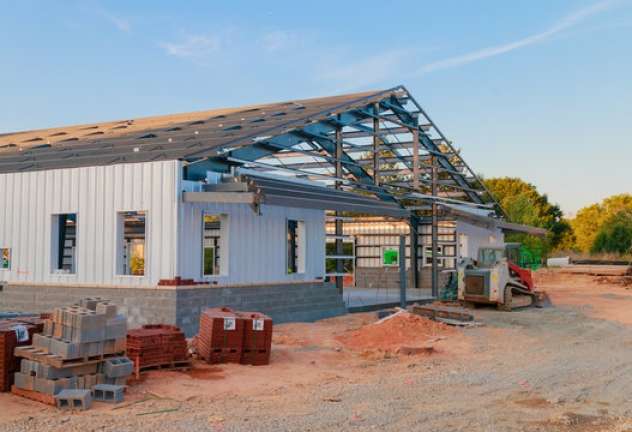Pickup trucks are loved by Americans. Even if you don’t really have the purpose of buying one, you still might, because you love it. Pickup trucks have gained immense popularity in the 21st century, as manufacturers are finding incredible ways of making them fun. They are not just limited to being used for hauling goods or towing things, but they also can be quick and can be used as a status symbol. With the EV influence being forwarded into the truck space too, now we have fully electric pickup trucks too. And, there are some extremely quick pickup trucks. Trucks that can boost to 60 MPH in 3 seconds or less are a reality and trucks are no longer boring. Check out the stats of a truck of your choice in CarIndigo.
But speed and acceleration are not the same things, are they? For starters, what is the difference between top speed and acceleration? Acceleration is how fast a car can get to a certain speed limit. The lesser time a car takes to get to that speed limit, the faster is the acceleration. But top speed is different. Top speed is determined by the highest speed limit that a car can hit. Sure, it might take a while to get there, but it will. So, acceleration is basically how fast a car gets to speed and top speed is how far a car can push the speed limit.
A car with insane acceleration might not reach the highest speeds possible. Similarly, a car with a very high top speed need not be the fastest accelerating car. So, there are two parameters to judge the “speediness” of a car. Coming back to the point, modern trucks can go fast. They have insane acceleration but their top speed limit is usually pretty low. For example, the fastest accelerating production car right now is the Tesla Model S Plaid. But the car with the highest top speed is the Devel Sixteen with an out-of-this-world 347 MPH. Whether that’s legal or not is a completely different story. Anyway, these cars are also extremely fast, but they need not necessarily be the fastest ‘accelerating’ cars in the world.
Similarly, pickup trucks can have good acceleration but their top speeds are limited. That doesn’t mean that their powertrain cannot go fast. They can. But as you might know, their ECUs are specifically tuned to restrict them to a certain speed limit. Top speeds of pickup trucks are generally kept quite low, in the vicinity of 100 MPH or so. Take the new 2022 Toyota Tundra, for example. It produces 437 horsepower and yet it is limited to a top speed of 106 MPH. Do you really think that a powertrain that produces 437 horses cannot go faster than 106 MPH? Well, of course, it can. In theory, it can go up to 165 MPH, which is pretty respectable. But pickup trucks have their top speeds limited and hence the result.
So, who is the culprit? Is it the tires? No. The tires can handle that speed, but the reason behind the speed limit is the rear driveshaft. Generally, pickup trucks use more than one driveshaft. Bringing the Tundra back in, there is only a single configuration of the Tundra that uses a single driveshaft. The honor belongs to the short-bed hybrid with double cabs. The length is just short enough that one driveshaft does the truck.
Now, pickup trucks are usually longer than that. They can have the Double Cab or the Crew Cab configuration and they might also have longer beds. Most people need longer beds. This means that the length of the truck increases significantly. In that case, do you think a single-piece driveshaft would do the trick? No. It generally does not work that way. These long bed trucks require a two-piece driveshaft. It provides stability. But the con of using a two-piece driveshaft is the fact that they do not spin at the required RPM for high-top speeds. To accommodate the immense amount of torque being output from the engine, you require a two-piece driveshaft. But they do not provide high top speeds.
Engineers can find a way to work around it and construct a driveshaft that can both accommodate the high torque and high speeds, but no one does it. That is because it will require more R&D and more money and time. And it is just not worth it, as most people would not even care. So why waste precious time?
That isn’t to say that trucks do not have breakneck accelerations. The monstrous RAM TRX can hit 60 MPH from a standstill in just 3.7 seconds, but its top speed is just limited to 118 MPH. Another super quick and menacing truck is the Ford F-150 Raptor, which is only limited to 118 MPH as well. The Nissan Frontier was the champion in claiming the highest top speed for a pickup truck, at just 120 MPH, which seems quite odd if one compares it to regular cars.
Earlier in the wake of the 21st century, truck manufacturers made trucks with smaller wheelbases and smaller lengths of the body. This not only allowed them to reduce the weight but also allowed them to significantly boost the top speed. Why? Because they could use a single-piece driveshaft. Trucks with top speeds of up to 150 MPH were not uncommon. The 2004 Dodge Ram SRT-10 could hit 147 MPH and the 2001 Ford SVT F-150 Lighting could hit an incredible 150 MPH for a pickup truck. Even the 2004 Dodge Ram SRT10 Quad Cab could hit 147 MPH.
Another reason for limiting the top speeds of pickup trucks is because they are pickup trucks. They are heavy and they carry goods or they might tow something. It’s good that the top speed is limited, since going at very high speeds and losing control will end badly. Heavy stuff should move slowly. However, with the age of EVs and the age of compact vehicles, who knows what the future might hold? We might have EVs with high top speeds once again, but there will be other caveats to counteract that. For now, people don’t really need high top speeds in their favorite pickup trucks.
















